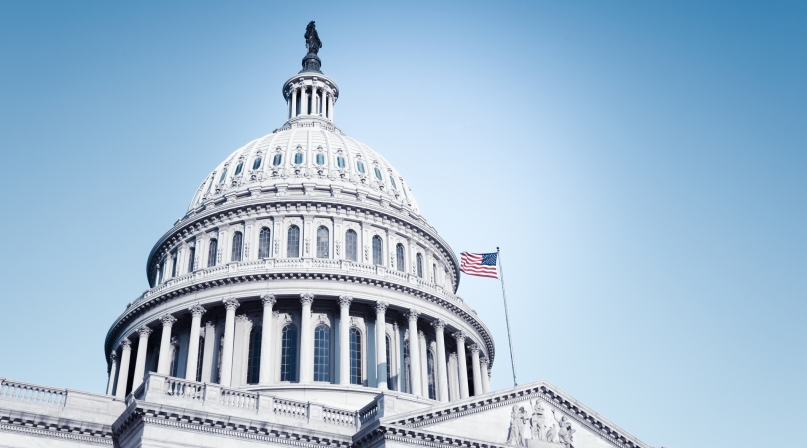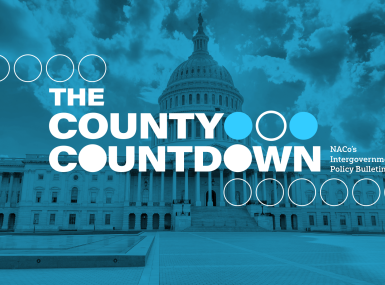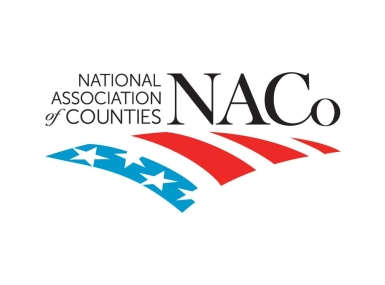U.S. Congress begins work on budget reconciliation process: What this means for counties
Author

Paige Mellerio

Blaire Bryant

Julia Cortina
Upcoming Events
Related News

Key Takeaways
On February 12, the U.S. House of Representatives unveiled a draft Fiscal Year (FY) 2025 budget resolution with budget reconciliation instructions to various House committees to officially begin the process of drafting legislation that the U.S. Congress will look to pass through budget reconciliation. The House Budget Committee marked up the resolution on February 13 and the full U.S. House voted along party lines to pass the budget resolution on February 25. The U.S. Senate unveiled their version of a FY 2025 budget resolution on February 10 and the Senate Budget Committee marked up their reconciliation instructions on February 12. On February 20, the full U.S. Senate voted along party lines to pass their FY 2025 budget resolution.
Currently the two chambers differ in their approaches to budget reconciliation, as detailed below, with the U.S. Senate taking a two-bill approach and the U.S. House looking to enact a wide range of policy priorities in one, sweeping bill.
What is the budget reconciliation process?
Budget reconciliation is a process that allows priority legislation to be expedited so long as the provisions in the bill have a direct fiscal impact on the federal government. Budget reconciliation bills are not subject to filibuster rules in the U.S. Senate and therefore allows the Majority to enact legislation without garnering bipartisan votes often needed to reach the 60-votes needed to end debate and move to a final vote. Both major political parties have traditionally used the budget reconciliation process to enact priority legislation over the past decade when they held majorities in both the U.S. House and U.S. Senate.
What are the reconciliation steps?
- U.S. House and Senate Budget Committees draft and markup a budget resolution instructing congressional committees to raise federal revenues or increase federal spending by a certain amount
- Congressional committees draft legislation in accordance with their instructions before sending draft text back to the Budget Committee to be packaged together as one bill
- The U.S. House and Senate debate and vote on budget reconciliation legislation
- Note: In the Senate, debate is limited to 20 hours although Senators can make motions and offer amendments after debate has expired
- Differences between the two bills are resolved and the reconciliation bill is signed into law by the President
- Note: The U.S. House and Senate must pass two identical bills before legislation can be signed into law
What is in the House and Senate resolutions?
Detailed information on reconciliation instructions to committees included in both the U.S. House and Senate budget resolutions is available below.
U.S. House Budget Resolution
As referenced above, the U.S. House is moving forward with one budget reconciliation bill that will include a broad range of policy priorities for the U.S. Congress and the Administration. The budget resolution marked up by the House Budget Committee would:
- provide no more than $4.5 trillion to extend expiring provisions of the 2017 Tax Cuts and Jobs Act
- raise the national debt limit by $4 trillion
- increase spending by $300 billion over 10 years for defense and immigration priorities
- require at least $1.5 trillion in mandatory spending cuts, with $2 trillion as the target, over the next decade that could include cuts and/or reforms to:
- Supplemental Nutrition Assistance Program (SNAP)
- Social Services Block Grant (SSBG)
- Temporary Assistance for Needy Families (TANF)
- Inflation Reduction Act (IRA) clean energy tax credits
Of note to counties the budget resolution directs the House Committee on Energy & Commerce to draft legislation reducing spending by $880 billion over the next decade representing the largest reduction mandate amongst the committees. While specific cuts remain uncertain, the bulk of health-related reductions will likely target the Medicaid program and could include FMAP adjustments, per-capita caps and work requirements. Medicaid provides coverage to over 70 million Americans and accounts for over half of all federal funds to states. These cuts would reduce eligibility, shift financial burdens to states and counties and jeopardize access to essential healthcare services—leading to higher uncompensated care costs and straining county budgets.
Additionally, if the U.S. House cannot reduce mandatory spending to this target level over the next decade, the Ways & Means committee’s spending allowance would be lowered to $3.5 trillion to extend the 2017 tax law. This could ultimately require the Ways & Means committee to find additional revenue generators to offset the cost of tax reform that could include limiting or eliminating the municipal bond tax-exemption. Learn more about county tax priorities here and NACo advocacy efforts here.
U.S. Senate Budget Resolution
The U.S. Senate initially began with a two-bill approach to budget reconciliation, marking up a budget resolution instructing U.S. House and Senate committees to draft legislation limited to defense and immigration related policy priorities in February and saving extending the 2017 tax law for a second reconciliation bill later in the year. However on April 5, the U.S. Senate adopted an amended budget resolution to unlock the ability to include tax provisions in one reconiciliation bill, similar to the U.S. House. The U.S. House passed the amended Senate resolution on April 10.
What are the next steps?
Now that the U.S. House and U.S. Senate have passed the same budget resolution, congressional committees can begin drafting their sections according to the budget reconciliations instructions. House committees began marking up their portions of reconciliation legislation in early May and concluded on May 13. The U.S. House Budget Committee is anticipated to meet on May 16 to package the bill together before it can be considered by the full House. Timing for floor consideration is undetermined. Additionally, the U.S. Senate will also need to pass the measure. If any changes to the bill are made in the U.S. Senate, it will have to be reconsidered in the U.S. House.
NACo staff will keep members apprised of updates. County leaders are encouraged to contact their members of Congress to advocate for county priorities in reconciliation.
Resource
Advocacy Toolkit: Counties and Tax Reform in 119th Congress

Related News

County Countdown – Dec. 1, 2025
Every other week, NACo's County Countdown reviews top federal policy advocacy items with an eye towards counties and the intergovernmental partnership.

Counties Celebrate Key Permitting Inclusions in SPEED Act
NACo issued the following statement in response to the passage of the Standardizing Permitting and Expediting Economic Development (SPEED) Act (H.R. 4776), which advanced out of the U.S. House Committee on Natural Resources on November 20.

CMS releases new guidance on Medicaid provider tax provisions in OBBBA
The Centers for Medicare & Medicaid Services (CMS) has released new guidance outlining how it will implement significant Medicaid financing changes enacted in the One Big Beautiful Bill Act (OBBBA). These provisions restrict states’ ability to use health care-related taxes, commonly known as provider taxes, to help finance the non-federal share of Medicaid.